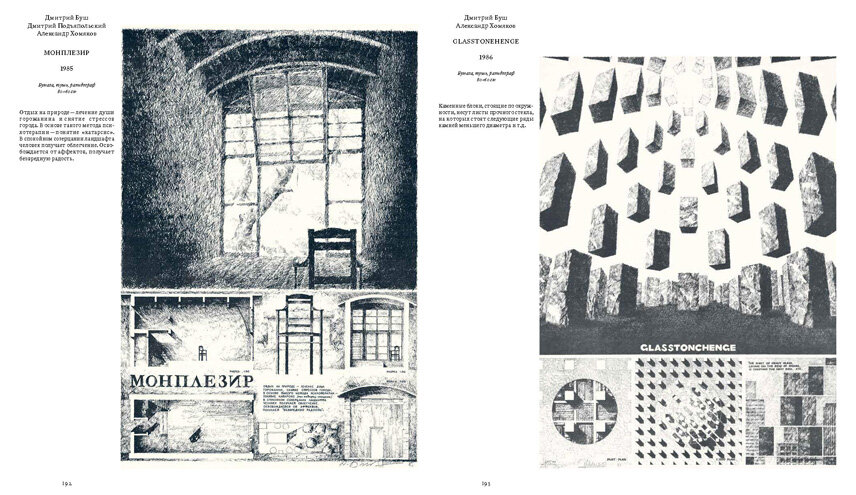ALEXANDER LOJKIN
NOVOSIBIRSK | NOV 2009


ARCHITECTURE – PAPER AND REALITY: WHERE’S THE COMMISSION?
DURING THE 80S, AN AUTHENTIC MOVEMENT CALLED PAPER ARCHITECTURE HAD FIRST EMERGED WITHIN THE SOVIET UNION. MOSCOW WAS THE EPICENTRE, BUT THERE WERE ALSO PROVINCIAL VERSIONS AND COUNTERPARTS TO THE MOVEMENT. PERHAPS THE MOST INTERESTING WAS BASED IN NOVOSIBIRSK.
It’s been 20 years now since we have travelled to Frunza (now Bishkek) in 1988, for the first Soviet festival of Paper Architecture, called “Architectural Alternatives”.
During the 80s, an authentic movement called Paper Architecture had first emerged within the Soviet Union. Moscow was the epicentre, but there were also provincial versions and counterparts to the movement. Perhaps the most interesting was based in Novosibirsk. The first project that can be identified as belonging to this movement was created in 1984, for a competition called “The Touring Theatre”. It was made by a group of architecture students, with Viktor Smishliyaev as their leader. Slava Mizin, known today as a key participant of “The Blue Noses” art group also took part, and so did Anderi Kyznetsov, along with another handful of students, who only participated in individual projects.
There was also another group, with a different creative approach. It consisted of Andrei Chernov, Sergei Grebennikov, and their leader who died in a tragic accident at the peak of his creative career - Sergei Gylaikin.
The third group came into existence at a later date, between 1987 and 1988, consisting of students from the Novosibirsk Institute of Engineering and Construction. These students saw their older counterparts almost as their architectural gurus.
The Novosibirsk paper architects were in constant contact with the Moscow group through their so called agent, Ivan Shalmin – today a well known Russian architect and designer, working in the private architectural sector and also in the field of interior design. In Moscow Shalmin was introduced to Yurii Avaakymov, and as a result of this connection, the Novosibirsk group were able to exhibit their works at conceptual exhibitions abroad. The vast majority of works were created in response to conceptual competitions, at first only foreign but later also Soviet. Sadly, our isolation from the global architectural world prevented us from winning these contests.
The paper architects were based in the Novosibirsk Institute of Engineering and Construction (NISI). As time went on, the movement grew with more and more students becoming involved and by 1987, there were 15-20 permanent participants. Since it was impossible to win the Japanese competitions, it was decided that the students will create their own – the Novosibirsk architectural seminars, with solutions and ideas for key undeveloped areas within the city as their subject. All this took place under the aegis of the upcoming centenary of Novosibirsk. These events took place once every two years with only 3 seminars in total. The first was organised in 1987, the results of which were exhibited in Frunza, 20 years ago and the last event took place in 1991. Naturally, the students themselves judged all the entries.
In this way, Novosibirsk saw the formation of an interesting professional community that formed its own values, its own ways of assessing them and a body of valuable creative work. Some of these projects have travelled all over the world for a long time, but they were only shown in Novosibirsk in 1999, when we organised a large exhibition. Some of these works were also shown at the largest annual architectural event in Moscow (Arx-Moskva), at the Central House of Artists. After this event, the group had successfully dissolved.
1991 was the last year of the Paper Architecture era. The new market economy had put an end to its existence, because there was no opportunity to make a profit whilst architects urgently needed to find a way of meeting their financial needs.
Lastly, a very important thing to note. The unique phenomenon of Paper Architecture came into existence as a result of the architect becoming his own client, because architecture and construction design are not the same thing. Architecture is not the mere design of buildings and their physical components - walls, roofs, ceilings, floors and foundations. Architecture is the design of habitable spaces, and in this context, there were no architectural commissions during the Kruschev and the Brejnev eras. This is why the architects had created for themselves a commission for their own, so called ‘quasi-architecture’. Interestingly, their work became synonymous with the global post-modernist aesthetic and philosophical movement. Soviet paper architects could show the world their own, and often very different point of view. Those very differences were exactly what made our works interesting to a global audience. However, in the 1990s, this period of self-generated theoretical commissions had come to an end.
TEXT: ALEXANDER LOJKIN
sasha.shalmina@gmail.com
(+44) 747 206 3877